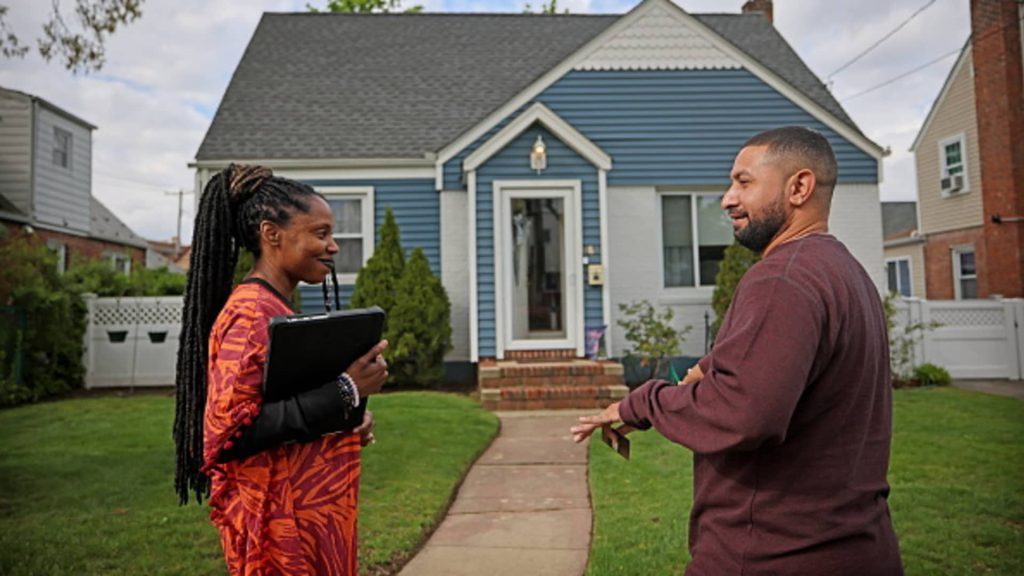Lorene Cowan, 44, thought she would own a home by now. However, in New York City, where Cowan lives and works, home prices have soared beyond reach.
“I would love to buy a home. That’s the next step,” said Cowan, a business and life coach. But “in New York, the entry in became so much more difficult,” she said.
In fact, New York notched the highest annual rise in home prices of all the metropolises in the latest Case-Shiller 20-city composite, up 7.4% in May compared with the prior year. The median listing price of a home in New York City is now more than $829,000, up 3.8% year over year, according to Realtor.com.
More from Personal Finance:
Mortgage rates have made a ‘substantial improvement’
Fewer young adults reach key life and money milestones
‘Job hugging’ has replaced job-hopping, consultants say
In recent years, rising prices across the country have made it harder for first-time homebuyers to enter the market, causing many millennials such as Cowan to delay that traditional milestone.
Even a recent drop in mortgage rates has done little to change that affordability equation. Undersupply is contributing to high prices, “holding back first-time home buyers from entering the market,” Lawrence Yun, chief economist of the National Association of Realtors, said in a recent statement.
The housing affordability problem
In the U.S., the median age of first-time homeowners is 38 years old, an all-time high, according to a 2024 report by the National Association of Realtors. In the 1980s, the typical first-time buyer was in their late 20s. And first-time buyers currently make up just 24% of the market, the lowest share on record, according to NAR.
Millennials and Gen Z still believe in the dream of homeownership as a wealth-building opportunity and an achievement, said Matt Vernon, head of consumer lending at Bank of America. “It’s just taking longer for them,” he said.

Higher mortgage rates have also helped keep first-time homebuyers on the sidelines.
Although mortgage rates fell recently to their lowest level since October, the average rate for a 30-year, fixed-rate mortgage is still just above 6.5%, according to Freddie Mac — a big leap from the under 3% levels near the start of the pandemic.
“The American consumer has gotten very used to the low-rate environment that has spanned over a decade,” said Vernon.
According to Bank of America’s latest homebuyer insights study, 60% of current homeowners and prospective buyers — a three-year high — said they’re unsure whether now is the right time to buy.
“Not knowing if rates are going to come down or go up is adding to the uncertainty in the marketplace,” Vernon said.
The housing lock-in effect
Where rates could be headed is key.
Federal Reserve Chair Jerome Powell said at a news conference in July that the Fed hadn’t yet determined whether it would cut its benchmark interest rate at its September meeting.
However, even if the central bank does cut rates, “it’s not a guarantee that mortgage rates are going to fall and make housing more affordable,” said Ashley Weeks, a wealth strategist at TD Wealth.
“Mortgage rates are more directly tied to the 10-year Treasury, so it’s entirely possible mortgage rates remain flat or even increase regardless of where the Fed moves in September,” Weeks said.
Still, many prospective homebuyers believe lower rates will come and that will help ease the housing affordability problem.
Roughly 75% of prospective homebuyers expect home prices and interest rates to fall and are waiting until then to buy a new home, Bank of America also found in its survey of 2,000 adults in March and April.
About one-third, or 32%, of Americans said they would need mortgage rates to fall below 6% to feel comfortable buying this year, according to another recent report by Bankrate.
However, more than half — 51% — of those polled said they wouldn’t buy this year at any mortgage rate, a whopping 13 percentage point jump from Bankrate’s 2024 survey.

